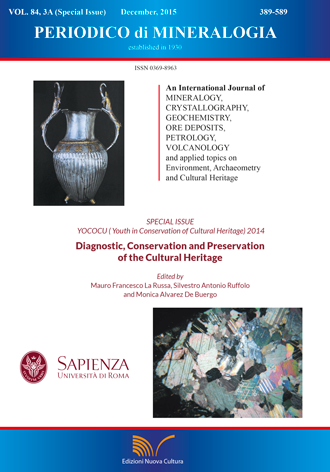A petro-chemical study of ancient mortars from the archaeological site of Kyme (Turkey)
DOI:
https://doi.org/10.2451/2015PM0028Keywords:
Anatolia, lime lump, binder, cocciopesto, moganite, archaeometryAbstract
Fourteen samples of ancient mortar (joint mortars and plasters) from the archaeological site of Kyme (Turkey) were studied by optical microscopy (OM), X-ray fluorescence (XRF), X-ray powder diffraction (XRPD), scanning electron microscopy (SEM-EDS) and micro-Raman spectroscopy to obtain information about their composition. The study allowed us to identify a new type of plaster inside the archaeological site of Kyme, not detected by previous studies of this site, in which vegetable fibers were intentionally added to the mixture. The combination of a petrographic analysis on thin sections by polarized light microscopy with a chemical analysis, has allowed us to highlight similarities and differences between the mortars, by acquiring more information about the constructive evolution of the archaeological area.


